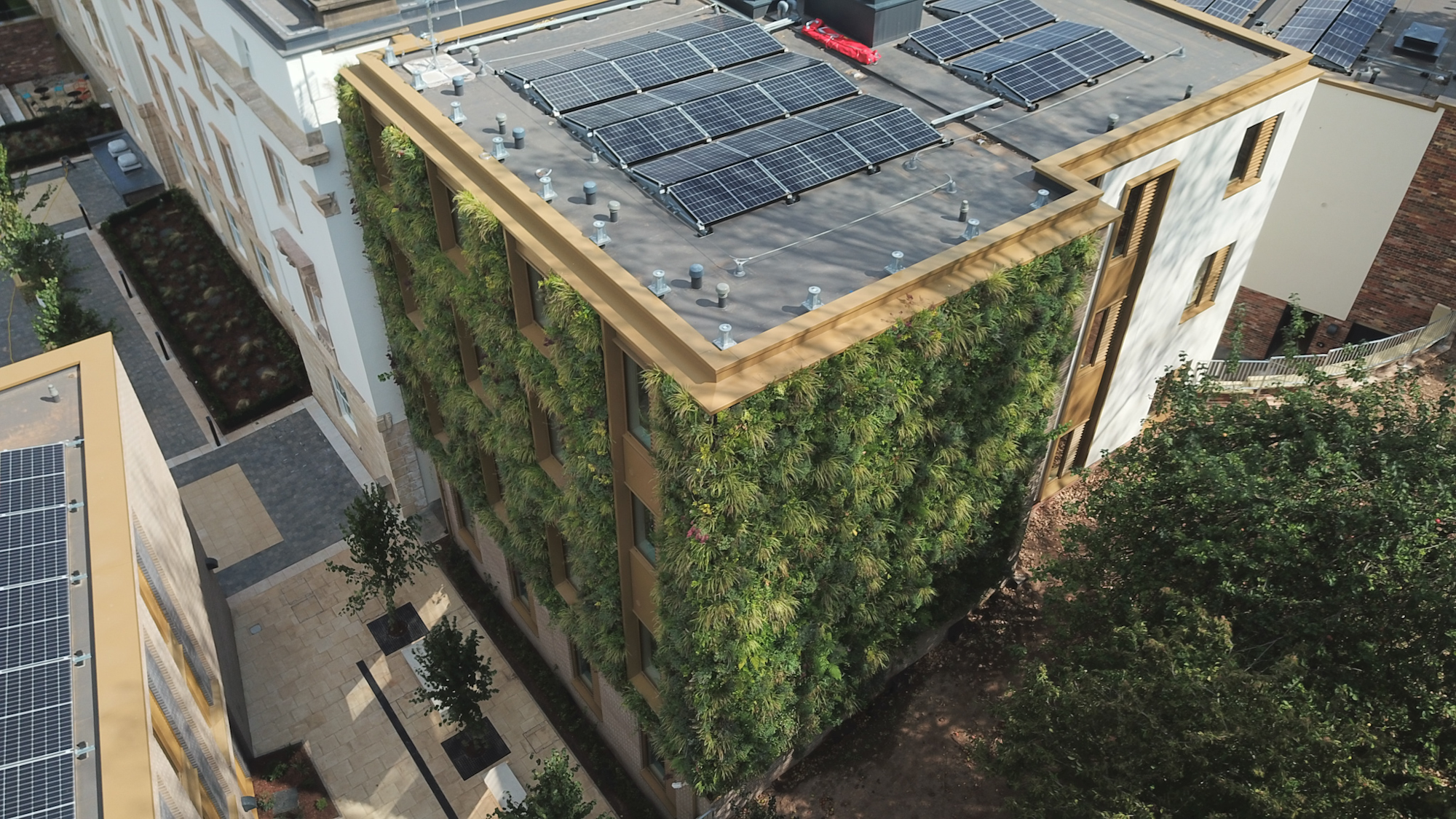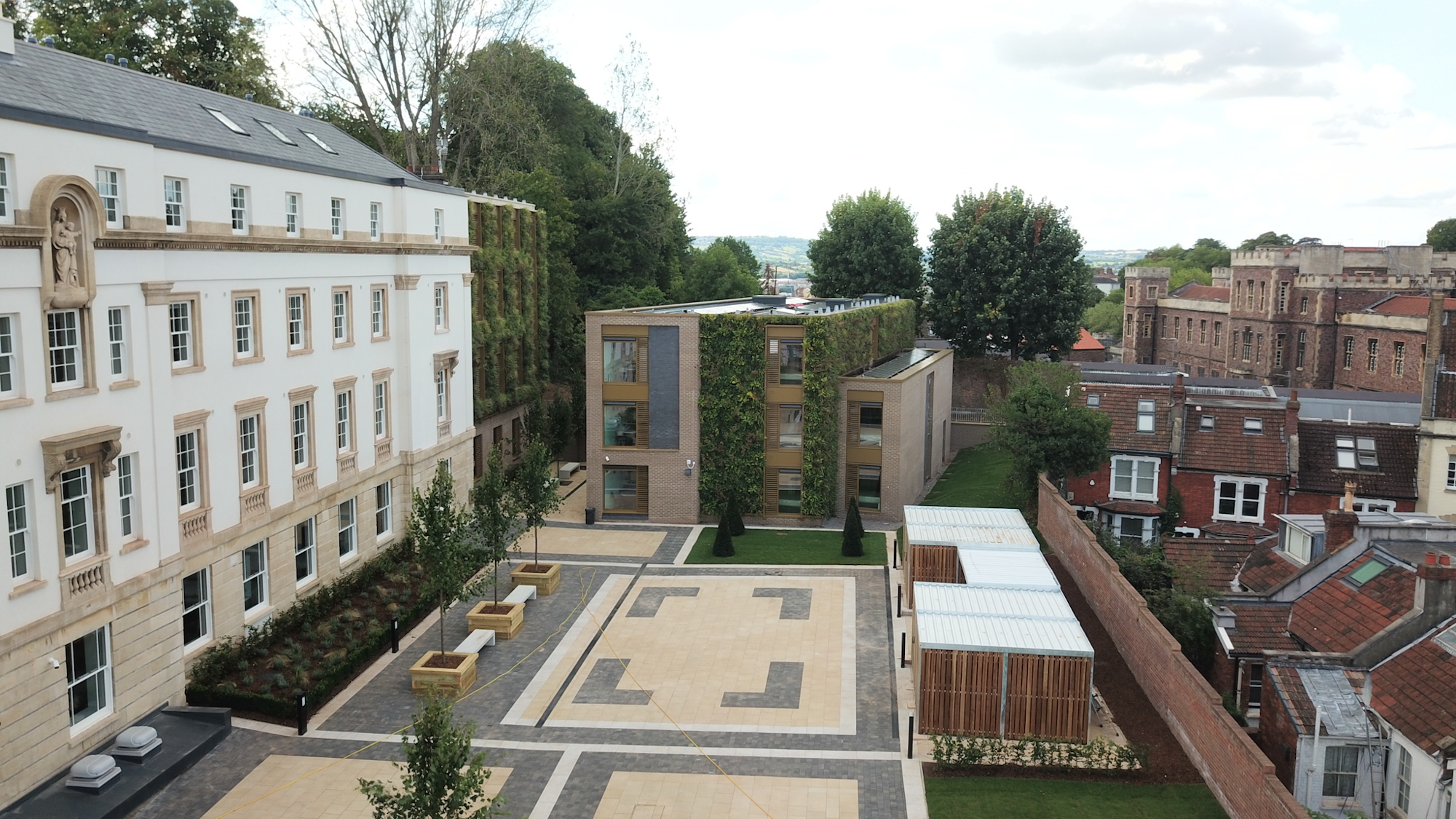Project Background
To be home to more than 150 students, St Mary’s in Bristol now has a soil-based living wall covering over 250m² of its façade.
Featured Solutions:
- Viritopia Living Wall System (Exterior)
Environmental Gains
- 425g oxygen produced per year
- 32.5kg of dust trapped per year
Size: 250m²
Project Drivers
Biodiversity
Aesthetics





